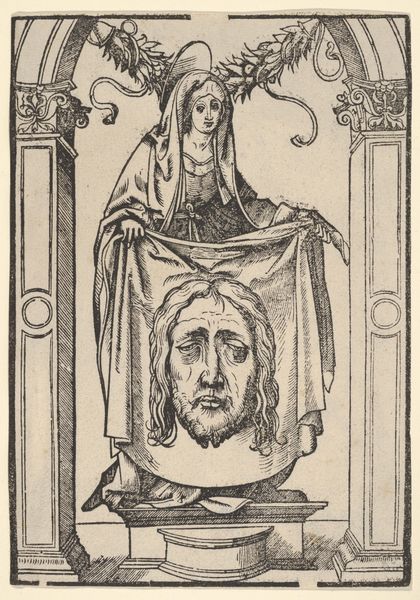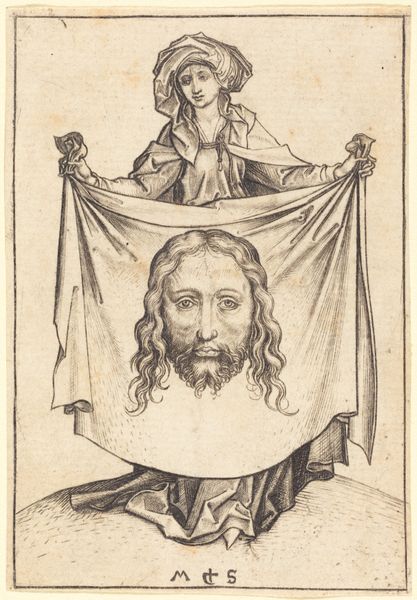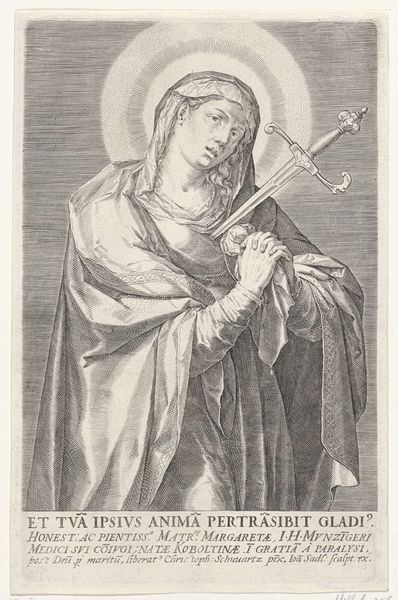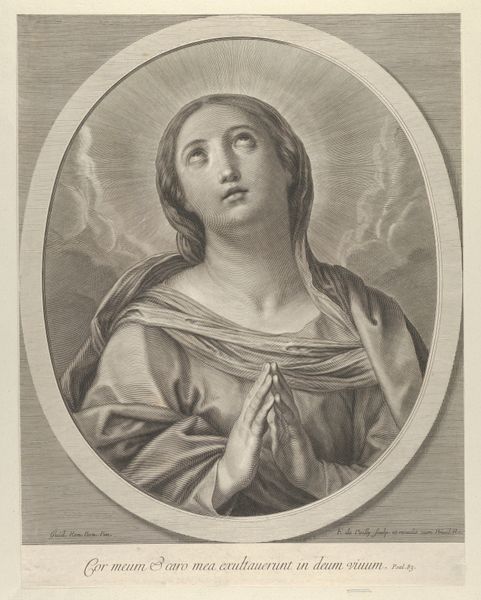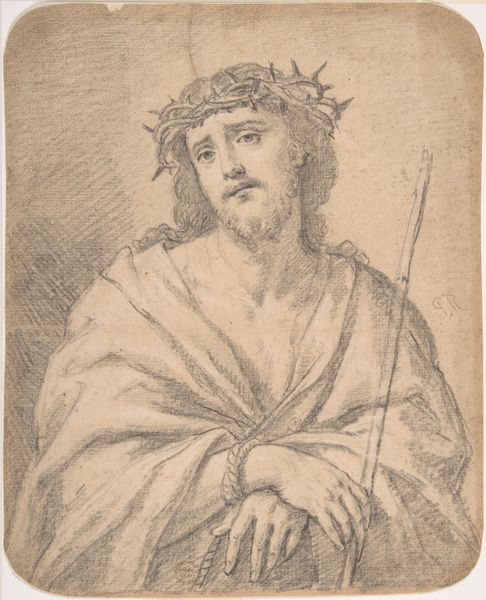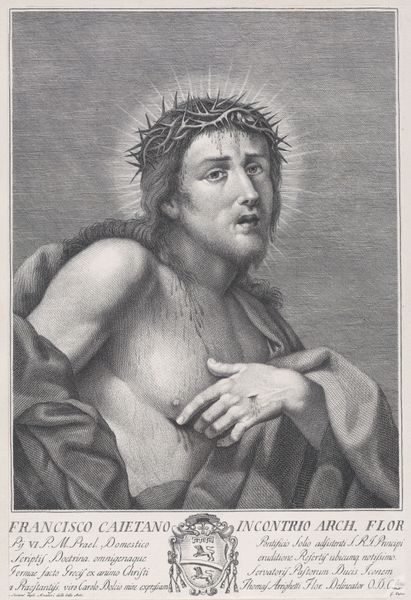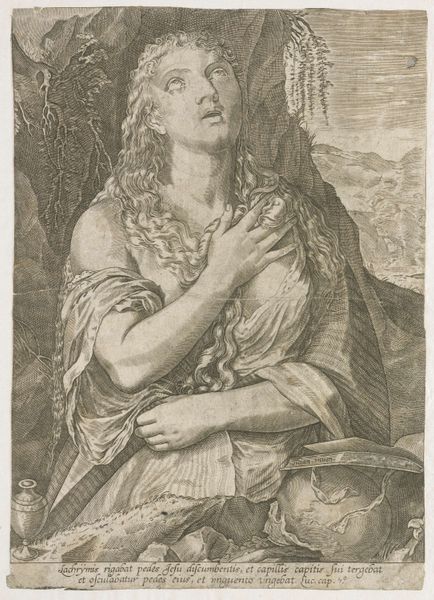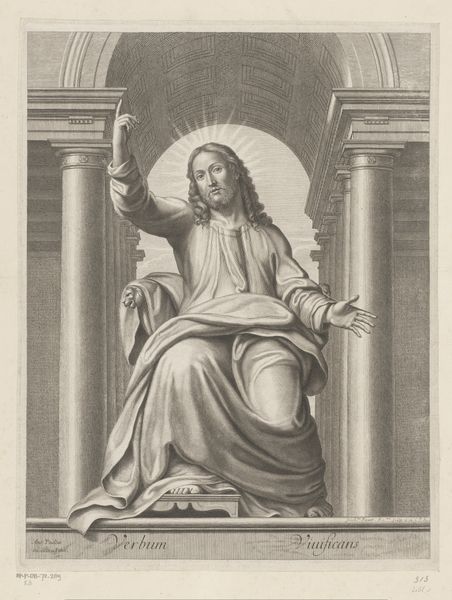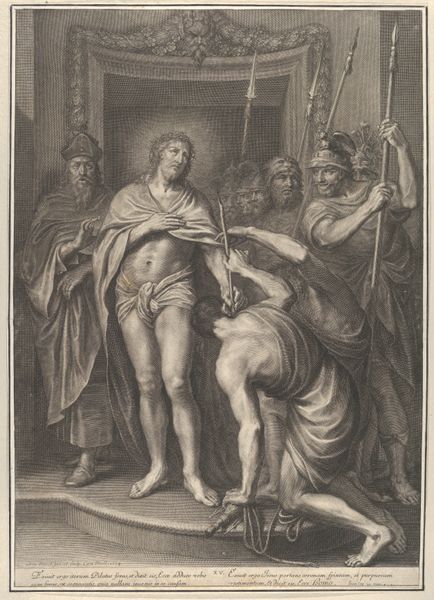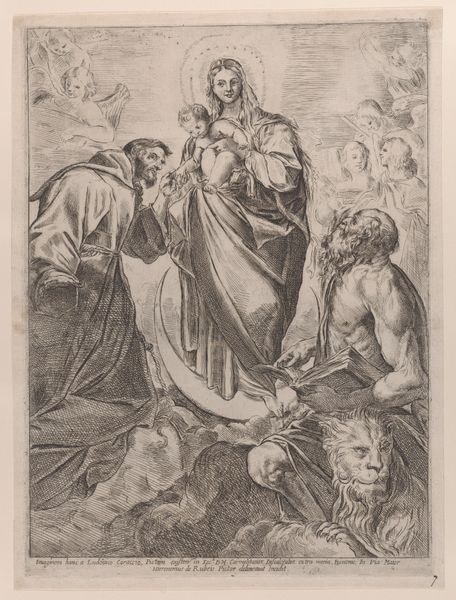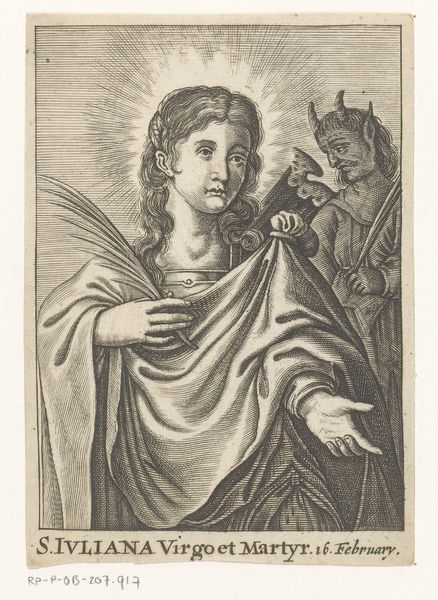
print, engraving
#
portrait
#
baroque
# print
#
charcoal drawing
#
portrait drawing
#
history-painting
#
engraving
Dimensions: height 223 mm, width 142 mm
Copyright: Rijks Museum: Open Domain
Curator: I find myself immediately captivated by the stark contrasts, the almost ethereal glow emanating from the figure of Veronica. It's a baroque print, created sometime between 1628 and 1689, and is titled "H. Veronica." The work is attributed to Alexander Voet, I. What strikes you first? Editor: The palpable sadness. The downturned eyes, the glistening tears—Veronica's grief practically leaps off the surface. And then, this unsettling mirroring of suffering between her face and the image on the cloth she holds. Is this even supposed to be... pleasant to look at? Curator: Pleasant is perhaps not the artist's intention here. The linear precision afforded by the engraving process renders every minute detail with exacting clarity, focusing our attention on the narrative. Observe how Veronica is illuminated from within, bathed in light. The luminosity surrounding her head emphasizes her saintly status, imbuing the scene with profound significance. Editor: You're right, of course. The rendering of light is pretty stunning. But all those meticulous lines… the prickly crown of thorns... they give it such a somber, almost obsessive feel. The image, though small, packs this emotionally loaded, melancholic punch. The material she's holding–the Veil, it just amplifies everything with its stark reality. And what I feel like she’s facing is nothing less than devastating. Curator: The historical and religious context undoubtedly colors our reading of the print. The image captured on the veil symbolizes both profound suffering and miraculous intervention. Consider the artist's mastery in evoking not only the physical likeness but also the profound spiritual weight carried within this single, powerful image. Its composition elevates it beyond mere portraiture to history-painting. Editor: True. Despite its seemingly simple presentation, Voet conjures up an entire world of pain and wonder through pure visual storytelling. The work transforms, even in reproduction, to some relic or symbol. Curator: Precisely. "H. Veronica," through its formal elements, compels a sustained contemplation on faith, suffering, and artistic representation itself. It has certainly offered some clarity on the power of printed devotional imagery in the Baroque era, wouldn't you agree? Editor: It definitely leaves one with something, yeah. It feels as though something real and profound has passed right through the paper... almost like the veil itself.
Comments
No comments
Be the first to comment and join the conversation on the ultimate creative platform.

